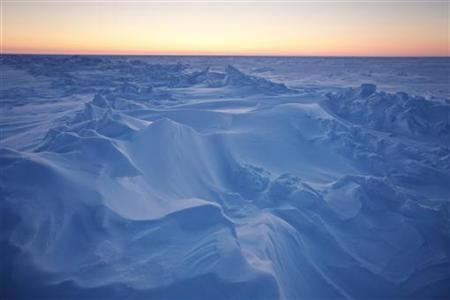Scientists record a 50 degree temperature spike in North Pole

Temperatures rose as much as 50 degrees Celsius above average in portions of the Arctic Circle, which usually averages 20 degrees Celsius below zero this time of the year. According to meteorologists and experts at the National Oceanic and Atmospheric Administration (NOAA), winter cyclones over the Atlantic pushed warm air far from the south, causing this spike. This is the same storm that led to tornadoes in the United States and blizzards in New Mexico.
“The combined flow at all levels of atmosphere was directed from the Atlantic over the Arctic and into Siberia,” Ryan Maue, a meteorologist for New York-based private weather forecasting company WeatherBell told FoxNews.com. “Thus, warmer and moister marine air from the Atlantic travelled over the Pole and raised temps to near or at freezing for a few hours. However, the warm advection event was short-lived and temps are closer to normal well below zero.”
James Overland, an Arctic climate researcher at NOAA, stated that two storms combined caused this rare weather event, suggesting that this resulted from several factors. Incidences such as this only occur once in five years, but experts emphasise that El Niño or climate change is not to be blamed.
“We tend to see more extreme events in the Arctic,” Overland adds. “The Arctic was the warmest last year as it’s ever been. There is so much random chaos in the weather that you can never say one event was caused by that but the fact we are seeing more extreme events is a long-term change.”
NOAA recorded that the Arctic sea ice was 360,000 square miles or 8.3 percent below the 1981-2010 average in November. Apparently, this was the sixth smallest November extent recorded since 1979.
“It is cold and dark in the Arctic so it will revert to its colder temperatures,” Overland remarked. “But every warm air moving into the Arctic keeps it from getting really cold like it used to. It has a minor, long-term effect, thinner ice and warmer temperatures overall.”
Experts say that these temporary conditions are unlikely to cause any permanent damage in the Arctic. However, the team admits that this only proves the problems rising global temperatures inflict on the region.





















